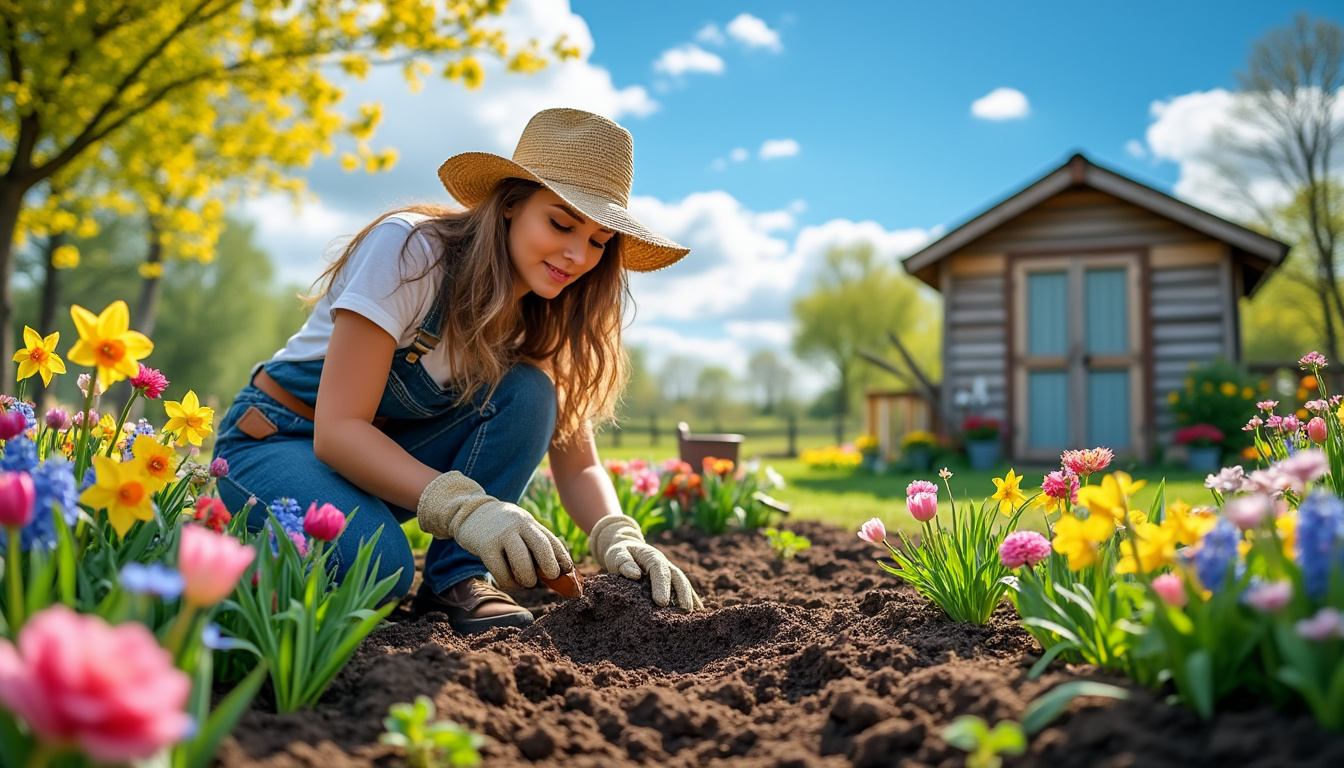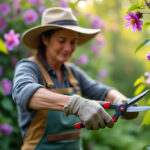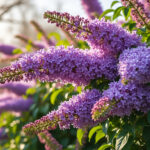Creating the garden of your dreams doesn’t have to break the bank. Whether you’re starting out or looking to enhance your existing landscape, planting flowers from seed can provide a splendid array of colors and textures at a fraction of the cost of purchasing established plants. By sowing seeds yourself, you can cultivate a wide selection of beautiful blooms that thrive during the season in which they are planted. While the wait for perennials to mature might be longer, the benefits are often worth the patience. Here are some expert-recommended flowers to grow from seed this spring.
Sunflowers: The Joyful Giants of the Garden
Sunflowers bring a splash of cheer with their iconic blooms, ranging from sunny yellow to rich burgundy. They are well-known for their rapid growth, producing eye-catching flowers just a few months after being sown.
| Feature | Details |
|---|---|
| Zones | 4 to 8 |
| Height | 1 to 15 feet |
| Spread | 1 to 3 feet |
| Care | Full sun; well-drained soil |
Morning Glory: A Climbing Wonder
With vibrant blooms in shades of pink, purple, and blue, morning glory can add a unique aesthetic to your landscape. This vining plant not only grows from seed easily, but it also thrives in both full sun and partial shade, making it a versatile choice for gardeners looking for vertical interest.
| Feature | Details |
|---|---|
| Zones | 2 to 11 |
| Height | 10 feet |
| Spread | 6 feet |
| Care | Full sun to partial shade; well-drained soil |
Sweet Alyssum: The Delicate Ground Cover
This charming flower is perfect for adding soft, low-growing blooms to your garden. Sweet alyssum is particularly great for containers and can spread its delightful fragrance while forming a lovely carpet of flowers.
| Feature | Details |
|---|---|
| Zones | 5 to 9 |
| Height | 3 to 10 inches |
| Spread | 2 to 4 inches |
| Care | Full sun to partial shade; well-drained soil |
Zinnias: Bringing Elegance and Color
Zinnias are a favorite among gardeners for their vibrant, daisy-like blooms that continue to flourish throughout the summer. Growing these flowers from seed is straightforward, and they’ll reward you with color and charm in a very short time.
| Feature | Details |
|---|---|
| Zones | 2 to 11 |
| Height | 3 to 3 feet |
| Spread | 2 to 3 feet |
| Care | Full sun; well-drained soil |
Petunias: Versatile Beauties
Petunias are renowned for their soft, trumpet-shaped flowers that create stunning displays in any garden setting, whether in hanging baskets or flower beds. Their resilience and coverage make them ideal for long-lasting summer blooms.
| Feature | Details |
|---|---|
| Zones | 2 to 11 |
| Height | Varies by variety |
| Spread | Can sprawl up to 2 feet |
| Care | Full sun; well-drained soil |
Cosmos: A Touch of Whimsy
With their feathery foliage and cheerful blooms, cosmos are not only easy to grow but also make splendid cut flowers. They thrive in a variety of soil conditions and add vertical interest to flower beds.
| Feature | Details |
|---|---|
| Zones | 2 to 11 |
| Height | 3 to 4 feet |
| Spread | 2 to 3 feet |
| Care | Full sun; well-drained soil |
Nasturtium: The Climbing Color Scape
Adding a pop of jewel-toned colors, nasturtiums not only beautify the garden but also repel harmful insects. Their unique form and trailing vines make them a charming addition to any floral arrangement.
| Feature | Details |
|---|---|
| Zones | 2 to 11 |
| Height | 12 to 18 inches |
| Spread | 12 to 18 inches |
| Care | Full sun to partial shade; well-drained soil |
Marigolds: The Colorful Pest Repellers
French marigolds, known for their vibrant hues, are excellent companions in the garden. They’re not just visually appealing; their ability to deter pests makes them a beloved addition to any flower bed.
| Feature | Details |
|---|---|
| Zones | 2 to 11 |
| Height | 6 to 12 inches |
| Spread | 6 to 12 inches |
| Care | Full sun; well-drained soil |
Rudbeckia Hirta ‘Cherry Brandy’: A Flavorful Choice
This variety of black-eyed Susan features rich, deep red petals complemented by a dark center. Hardy and self-seeding, they serve both as stunning cut flowers and as resilient garden performers.
| Feature | Details |
|---|---|
| Zones | 2 to 11 |
| Height | 1 to 2 feet |
| Spread | 1 to 2 feet |
| Care | Full sun; various soil types |
When is the best time to plant tomatoes for a fruitful harvest?
Time to Plant Your Spring Bulbs
Planting spring bulbs is best done in the fall, ideally about 6 to 8 weeks before the first frost. This timing allows bulbs to establish roots before winter settles in, leading to vibrant blooms that can usher in the spring season beautifully. For further insights on what bulbs to choose and how to care for them, check out resources from companies like Jackson & Perkins or White Flower Farm.
Frequently Asked Questions
When is the best time to plant flowers from seed?
Generally, the best time to sow seeds varies depending on the flower variety. However, most annual flowers can be sown directly in the spring after the last frost.
How can I prepare my soil for planting?
Ensuring your soil is well-drained and enriched with compost or a quality soil amendment is key to healthy plant growth. Products like Miracle-Gro can help boost soil quality.
What are some reliable seed companies I can use?
reputable sources like Burpee, Park Seed, and Eden Brothers offer a wide variety of seeds adapted for different climates.
Do I need to start seeds indoors?
While not necessary for all plants, starting seeds indoors can give them a jump start, especially for varieties with a long growing season.
What flowers are best for attracting pollinators?
Flowers like zinnias, cosmos, and nasturtiums are known to attract beneficial pollinators like bees and butterflies, making them great additions to any garden.
















